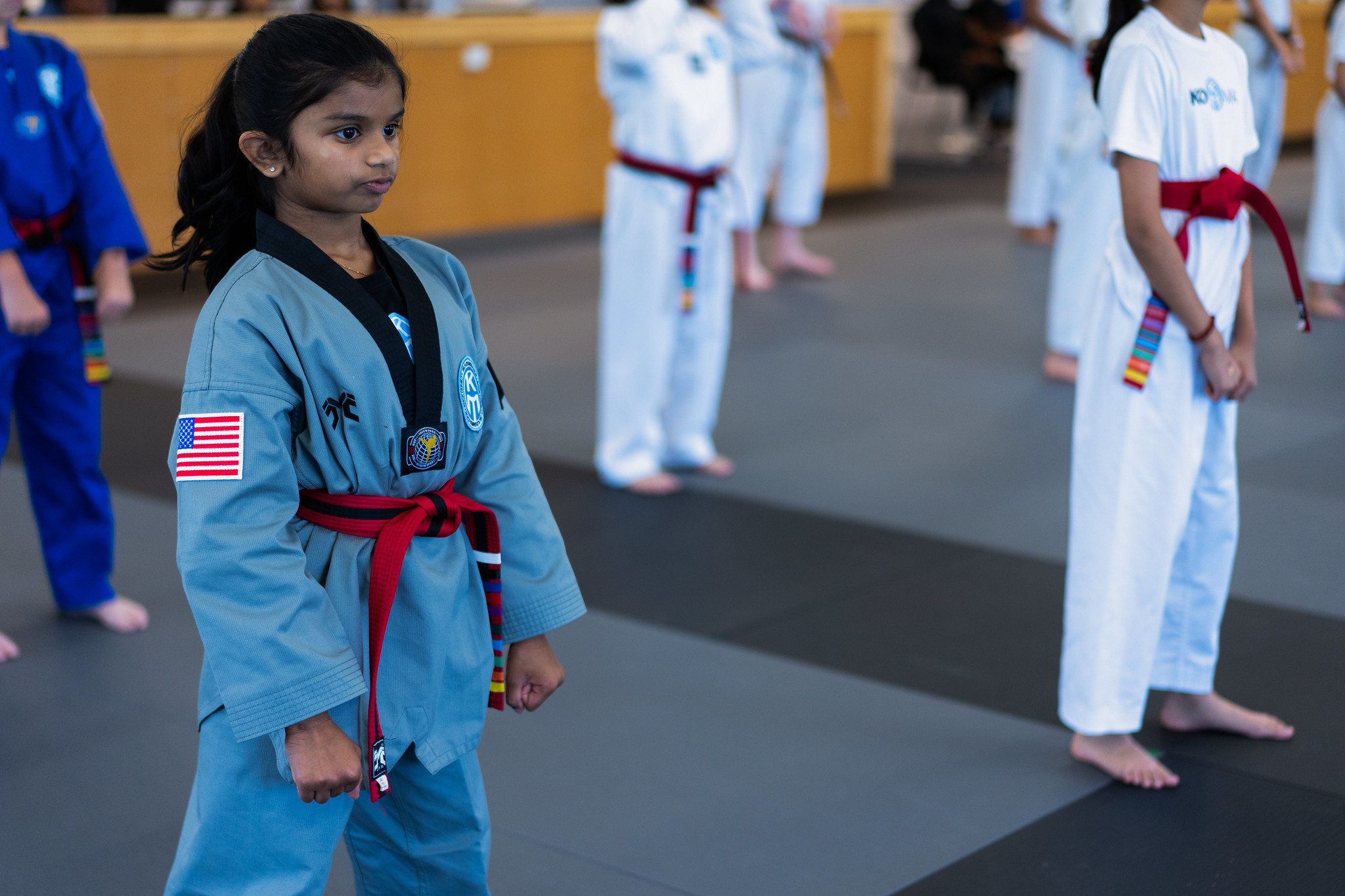Small kids are learning how to control their bodies every day. From grabbing a cup with two hands to running without tripping, physical coordination plays a big part in helping them feel confident while they move. Without good coordination, even basic things like throwing a ball or climbing stairs can feel frustrating. That’s why it’s helpful to find activities that strengthen balance, timing, and control in ways that feel fun and natural.
Taekwondo is one of those activities. It blends structured movements with play and teaches kids how to connect their minds and bodies. Through steady practice, children learn how to move more smoothly, stay focused, and follow directions—all while having fun. Taekwondo classes for kids offer the chance to build coordination in a positive space where progress matters more than perfection.
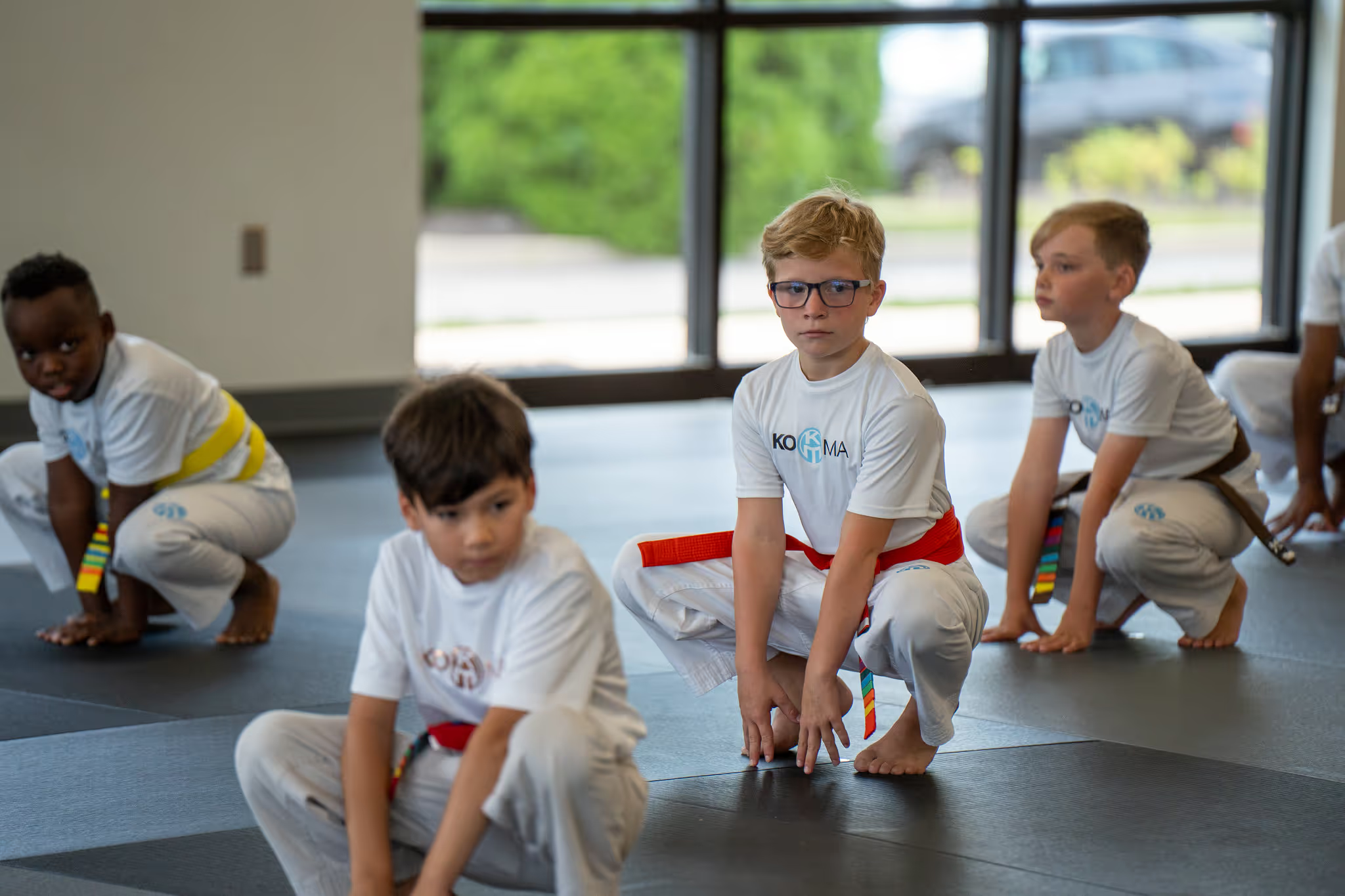
The Role Of Taekwondo In Developing Coordination
Taekwondo isn’t just about kicks and punches. It’s about helping kids learn how their bodies work and respond to direction. When a child is first asked to balance on one leg while raising their arms a certain way, they might wobble or look unsure. But over time, those same movements start to feel more natural because the body starts remembering how to do them. That’s physical awareness, and it builds with each class.
At the heart of taekwondo are movements that involve left and right sides of the body working together. Kids are constantly shifting weight, reaching across their bodies, or changing direction. These actions all support what's known as cross-body coordination. It’s the same kind of skill that helps with sports, learning to write, or even tying shoes. Taekwondo supports this growth in a steady, repeatable way.
Some specific ways taekwondo builds coordination include:
- Learning to step forward, pivot, or turn while holding a set stance
- Practicing sequences that combine blocks, kicks, and punches
- Building rhythm through repeated drills and movements
- Using both sides of the body evenly during training
- Following verbal directions and reacting with the correct movement
One useful aspect of taekwondo is that it doesn’t just train the body, it also strengthens how children process direction. They hear a movement, watch it demonstrated, and then try it themselves. That three-step process helps reinforce how the brain and body work together. For example, if a child is told to step forward with the right foot and block with the left arm, they must not only remember the order but also control their body enough to do it. That’s real-time coordination in action.
When kids feel their skills improving, they often gain more independence in everyday settings. From better posture while sitting to improved ability when playing on the playground, the benefits show up naturally. When coordination gets stronger, kids tend to move with greater ease and confidence both in class and outside of it.

Fun Exercises And Activities In Taekwondo Classes
Taekwondo works best when kids are engaged and moving. Instructors use kid-friendly drills and activities to keep things exciting while teaching control and coordination at the same time. These activities are structured but fun, turning practice into play that helps kids stay focused and motivated.
Some of the most common class activities that build coordination include:
1. Animal movement drills – Kids walk like crabs, jump like frogs, or crawl like bears. These exercises work the body in different directions and challenge balance and muscle control.
2. Line kicking or punching – Practicing the same kick or punch down a line of pads teaches rhythm and spatial awareness. Kids get to repeat the move while keeping pace with classmates.
3. Footwork games – Moving from one marker to another in different ways like side stepping, hopping, or running helps with directional changes and coordination.
4. Mirror drills – Partner exercises where one student mirrors another’s movement help kids work on timing, attention, and balance.
5. Slow-motion movements – Doing common techniques in slow motion helps kids think through each part of the movement. It allows their bodies to learn how to stay steady and in control.
For younger kids, these games are about more than just fun. They create a pattern where practice doesn’t feel like work. For example, a child who struggles to stay on one leg might enjoy a simple challenge like balance like a flamingo for five seconds. It’s playful but still helpful.
Movement activities also support other important elements like listening and patience. Kids need to wait their turn, follow directions, and try again if it doesn’t go right the first time. That repetition builds coordination in small but steady steps. And over time, those small steps lead to big wins in how kids carry themselves and react to movement.
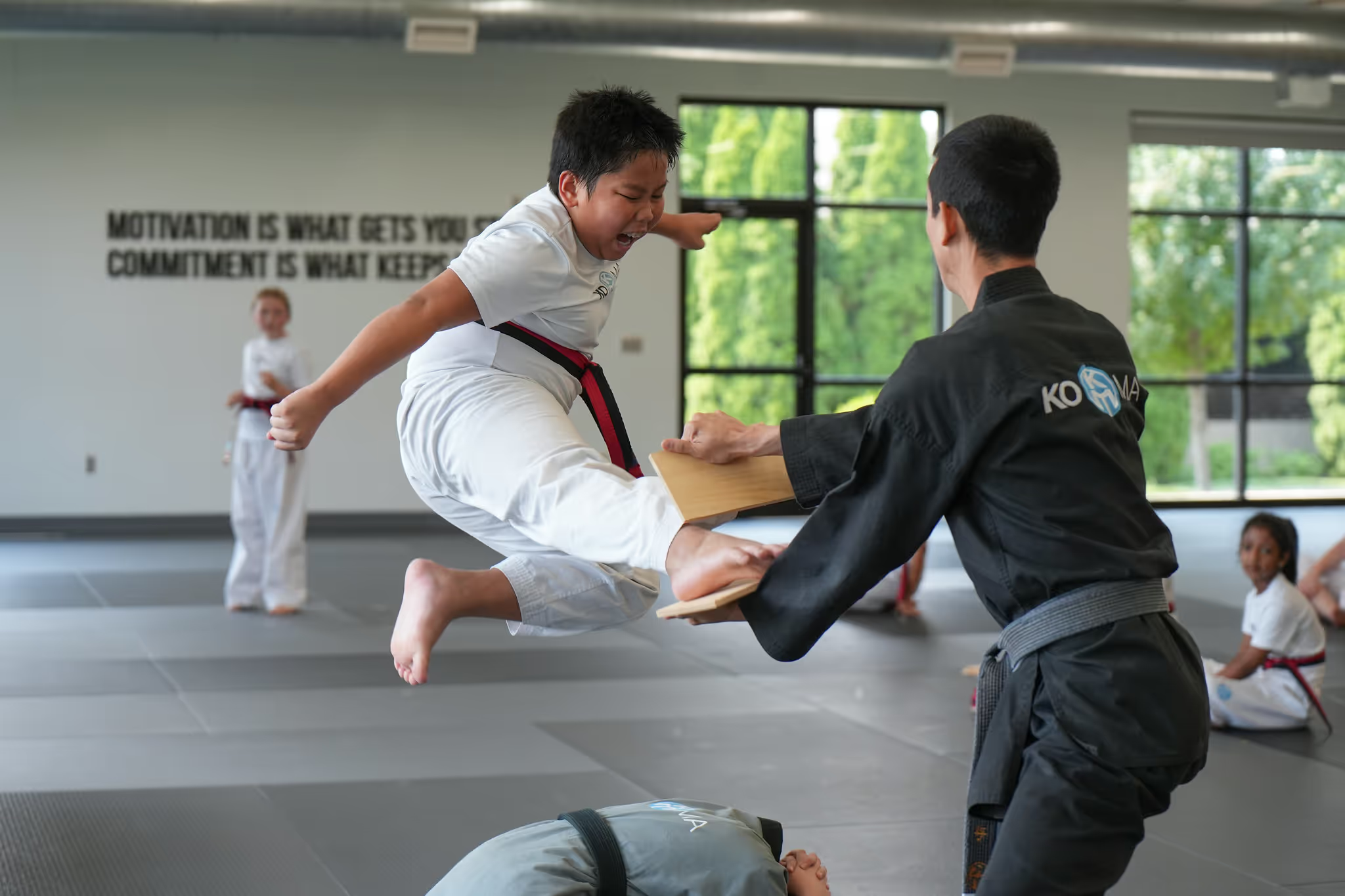
Benefits Beyond Coordination
Improved coordination is easy to see during class. Kids move smoother, react quicker, and keep their balance longer. But the benefits don’t stop there. Gaining better control over movement also builds confidence. Kids who once hesitated to try new things start to feel more willing to take on challenges, whether it’s hopping across stepping stones at the park or joining a game of tag at school.
As coordination improves, focus often gets a boost too. Taekwondo requires paying attention to details, starting and ending at the right time, watching others, and following specific steps. That kind of focus can carry over into everyday life. A child might begin sitting longer during school lessons or listening more carefully at home. These aren’t overnight changes, but small shifts that get stronger over time.
Better posture is another outcome that often comes with taekwondo training. Because kids learn how to stand, sit, and move with intention, their bodies naturally adjust to new habits. Even shoulders and back muscles gain strength. One child who once slouched at the dinner table might start sitting taller without even thinking about it. These shifts might seem small, but they help create better movement and awareness as kids grow.
More than anything, taekwondo gives kids a sense of control over their own bodies. That awareness helps them avoid injuries, stay active, and feel capable in many areas of life. Physical coordination might be the focus, but the personal growth that comes with it is just as valuable.
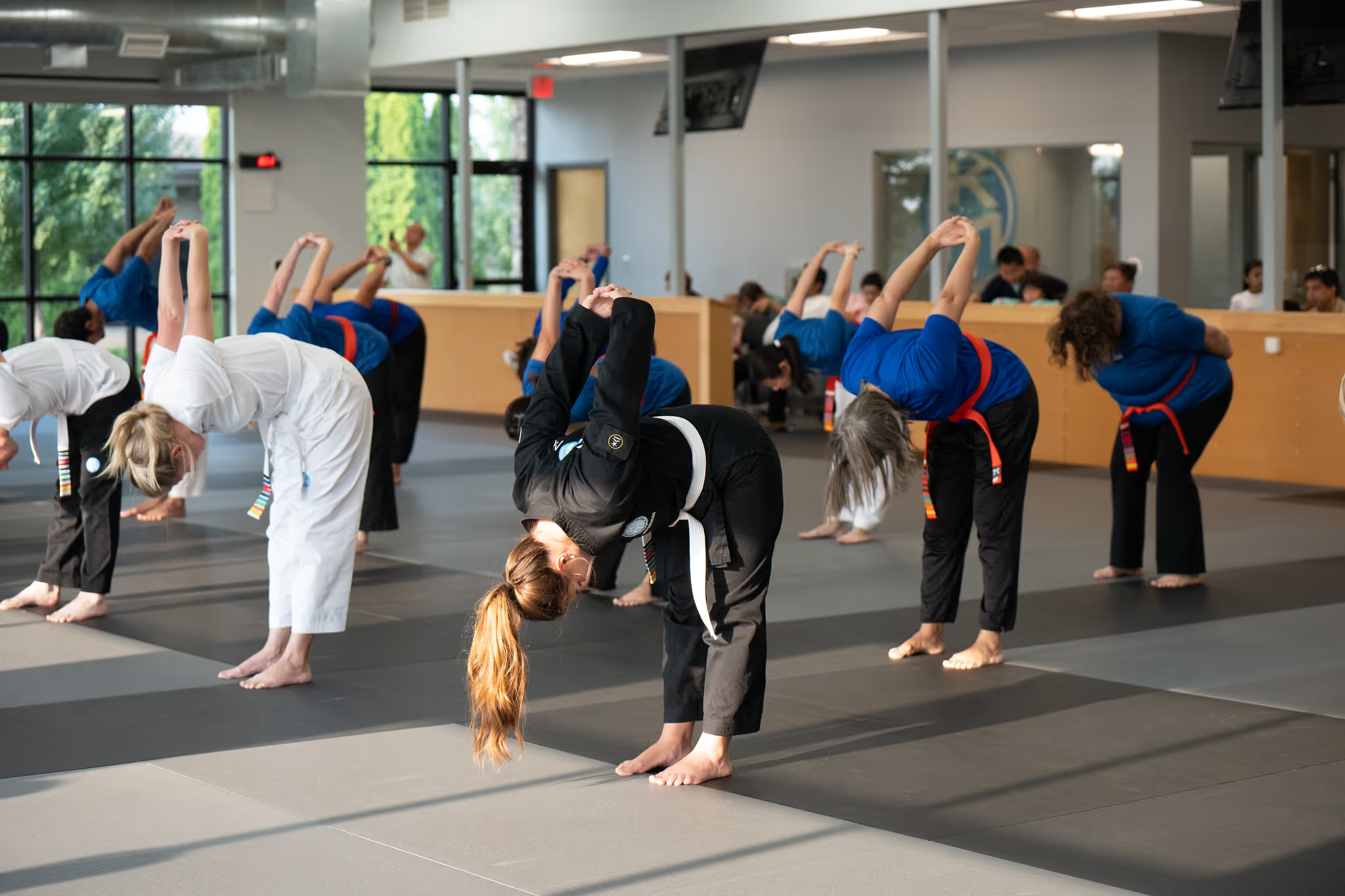
Creating Lasting Coordination Skills
To keep those skills growing outside of class, consistency matters. Kids improve through steady practice, whether it's once a week or more often. Being in class gives them the chance to layer new movements on top of what they already know. The repetition strengthens brain-body connections and sharpens how they respond to new situations.
At home, simple routines can support what kids learn in taekwondo. This doesn't have to be complicated or strict. Just adding light movement into everyday moments can make a difference. Some small ways to reinforce coordination outside class include:
- Letting kids lead a short stretching routine before bedtime
- Practicing balance by standing on one foot during teeth brushing
- Doing a few squats or slow-motion kicks during screen breaks
- Using visual or audio instructions to copy movements together
- Setting up a basic obstacle course indoors or in the backyard
These little habits keep the body in motion and show kids that practice doesn’t only happen in class. They begin to see movement as part of daily life, not just something tied to a uniform or a location. When it stays fun and low-pressure, they’re more likely to stay interested and committed.
A long-term bonus is that children start to set goals for themselves. Whether they want to hold a stance without falling or memorize a new combo, each success builds pride. That kind of internal motivation is hard to teach, but taekwondo often lays the groundwork for it to grow.
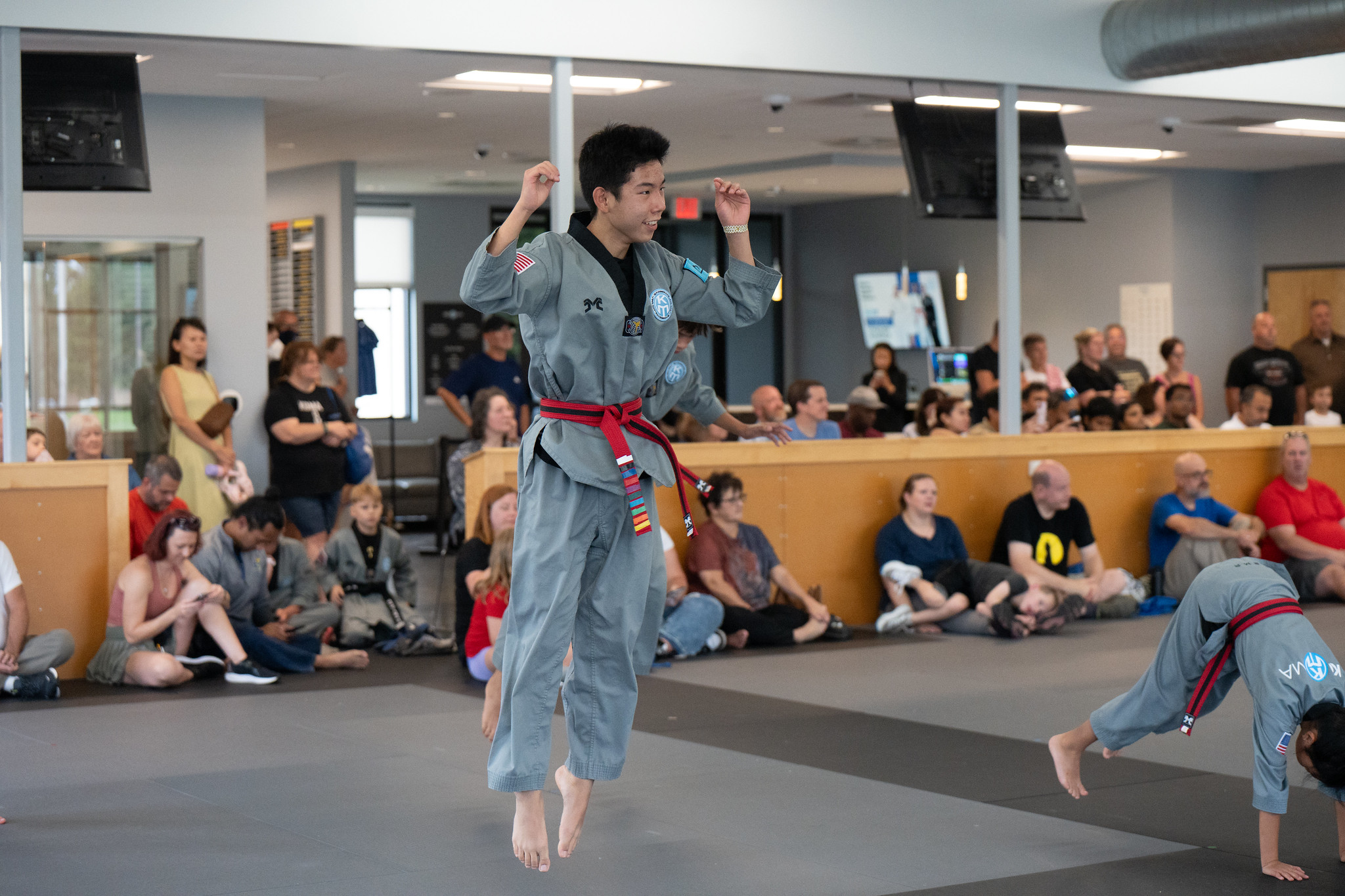
Help Your Child Build Skills with Taekwondo
The body and brain are always learning. For kids, physical coordination is about more than mastering a few stances or kicks. It shapes how they move through the world, how they handle new challenges, and how they feel about themselves.
When kids practice taekwondo regularly, many small benefits add up. They learn how to stand tall, take direction, follow patterns, and move with control. Over time, these lessons build a stronger foundation that supports them in sports, classroom settings, and day-to-day life.
Confidence builds when kids feel in control of their movements and, by extension, in control of what they try next. The path isn’t about perfection or going fast. It’s about showing up, practicing, and growing a little each time. Through movement, kids discover their rhythm. And with the right support, they learn to carry that confidence forward.
Explore how taekwondo can enrich your child's life beyond physical coordination. At KOMA Taekwondo, we offer engaging taekwondo classes for kids that focus on growing confidence, discipline, and focus. Join us to see how our supportive environment can help your child thrive both in and out of the dojo.





